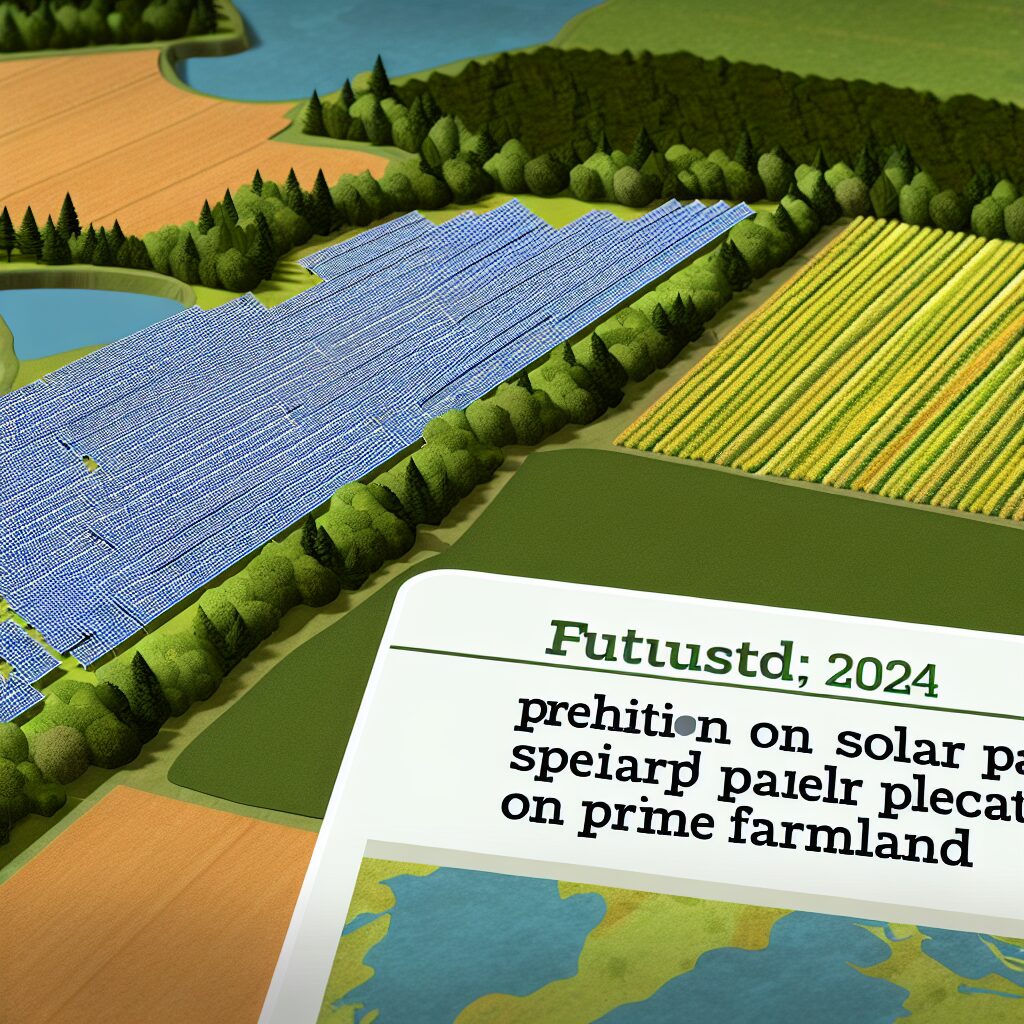Ontario’s Ban on Solar Farms and Prime Farmland Explained
Ontario’s government recently implemented a ban on solar installations on prime farmland, a move that has sparked significant debate among environmentalists, farmers, and energy experts. This policy decision is rooted in the need to protect agricultural land while balancing the province’s energy needs. In this blog post, we delve into the motivations behind this ban, its implications for the agricultural and energy sectors, and explore potential alternatives such as agrivoltaics.
Understanding Prime Farmland
Prime farmland is land that has the best combination of physical and chemical characteristics for producing food, feed, forage, fiber, and oilseed crops. In other words, it is the most fertile and productive land available for agriculture. Ontario, like many other regions, prioritizes the preservation of this valuable resource to ensure food security and sustain its agricultural economy.
The Rationale Behind the Ban
The decision to ban solar installations on prime farmland centers around the following key reasons:
1. Food Security
The primary concern is food security. With a growing population, the demand for locally produced food is increasing. By protecting prime farmland from being converted to solar farms, Ontario aims to ensure that its agricultural land remains available for food production.
2. Agricultural Economy
Agriculture is a significant contributor to Ontario’s economy. The province’s farming sector supports thousands of jobs and generates billions of dollars annually. Ensuring that prime farmland remains in agricultural use helps sustain this vital economic sector.
3. Land Scarcity
Prime farmland is a finite resource. Once it is converted to other uses, it is challenging, if not impossible, to revert it back to productive agricultural land. By implementing the ban, Ontario aims to prevent the permanent loss of valuable farmland.
Impact on the Renewable Energy Sector
While the ban aims to protect agricultural land, it has raised concerns in the renewable energy sector. Ontario has been a leader in promoting renewable energy, and solar power has played a significant role in this transition. The ban could hinder the growth of solar energy projects and slow down the province’s progress toward its renewable energy targets.
Exploring Agrivoltaics
One potential solution to the conflict between agricultural land use and solar energy development is agrivoltaics. Agrivoltaics refers to the simultaneous use of land for both agriculture and solar energy production. By installing solar panels above crops, farmers can continue to grow food while also generating renewable energy.
Benefits of Agrivoltaics
1. Dual Land Use
Agrivoltaics enables dual land use, allowing farmers to maximize the productivity of their land. Instead of choosing between agriculture and solar energy, they can benefit from both.
2. Enhanced Crop Growth
Some studies suggest that certain crops can benefit from the partial shade provided by solar panels. The panels can reduce water evaporation and protect crops from extreme weather conditions, potentially leading to improved yields.
3. Economic Diversification
By adopting agrivoltaics, farmers can diversify their income streams. They can earn revenue from both crop production and energy generation, reducing their financial risk.
Challenges of Agrivoltaics
Despite its potential benefits, agrivoltaics is not without challenges. The initial setup costs can be high, and there may be technical and logistical challenges to overcome. Additionally, not all crops are suitable for growth under solar panels, and careful planning is required to optimize both agricultural and energy outputs.
The Path Forward
Ontario’s ban on solar farms on prime farmland reflects the delicate balance between preserving agricultural land and promoting renewable energy. While the ban addresses important concerns about food security and the agricultural economy, it also underscores the need for innovative solutions like agrivoltaics.
As the province continues to navigate this complex issue, it is essential for stakeholders from the agricultural and renewable energy sectors to collaborate. By working together, they can explore and implement strategies that protect prime farmland while advancing Ontario’s renewable energy goals. Agrivoltaics, with its potential for dual land use, represents a promising avenue for achieving this balance.
In conclusion, Ontario’s decision to ban solar installations on prime farmland highlights the importance of preserving agricultural resources while also addressing the need for sustainable energy solutions. By exploring innovative approaches like agrivoltaics, the province can continue to lead in both agriculture and renewable energy, ensuring a sustainable future for all.
Source
https://www.google.com/url?rct=j&sa=t&url=https://www.nationalobserver.com/2024/09/04/news/ontario-ban-solar-installations-prime-farmland-agrivoltaics&ct=ga&cd=CAIyHDBjNjdhMjlmZDdkNDZmZmI6Y29tOmVuOkNBOl

